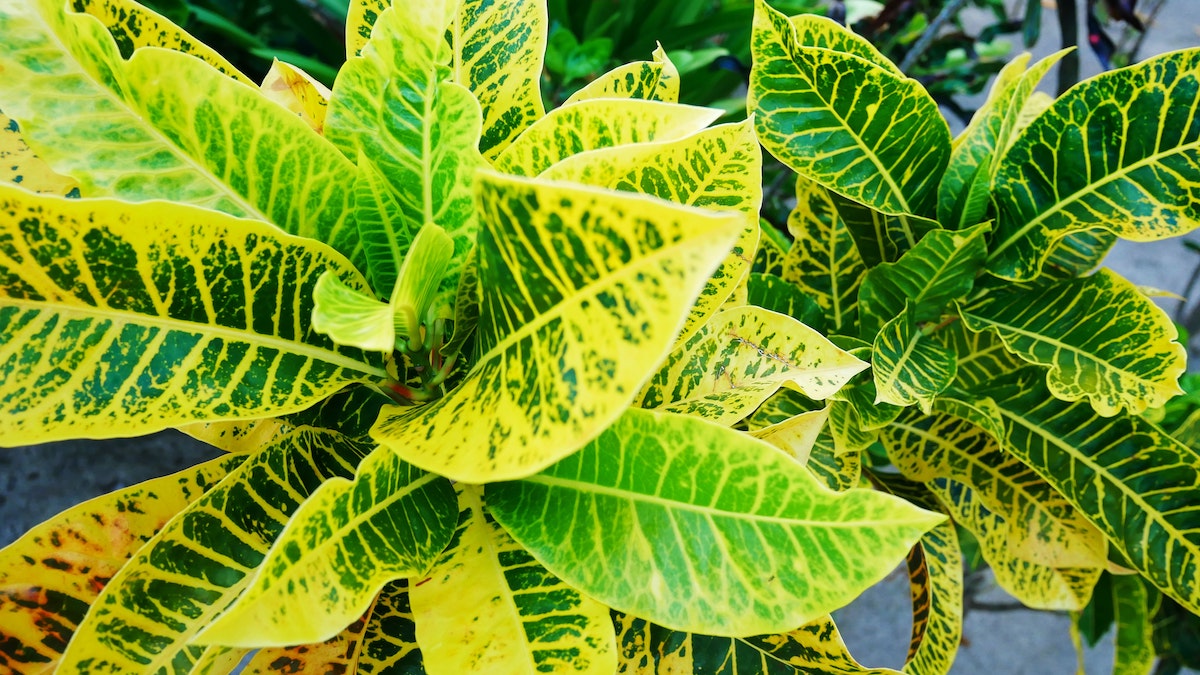Crotons are gorgeous house plants. Indeed, they can liven up the dreariest corners of your home with a splash of glossy colors. Did you impulse-buy one of these beauties or do you want one but don’t know how to take care of a croton? Then this article is for you. Our guide is packed with the best care tips to keep your new pot plant in peak condition.
Table of Contents
Origins and Appearance
The croton plant, which also goes by the snazzy Latin name of Codiaeum variegatum, is native to the Pacific and Malaysia.
The plant has large laurel-shaped leaves. The latter is evergreen, glossy and beautifully patterned. The leaves also appear in a variety of colors including dark green, white, yellow, orange, pink, red, crimson and purple. Under optimal conditions, croton plants can grow to a height of 20 meters (6 meters).
Temperature and Humidity
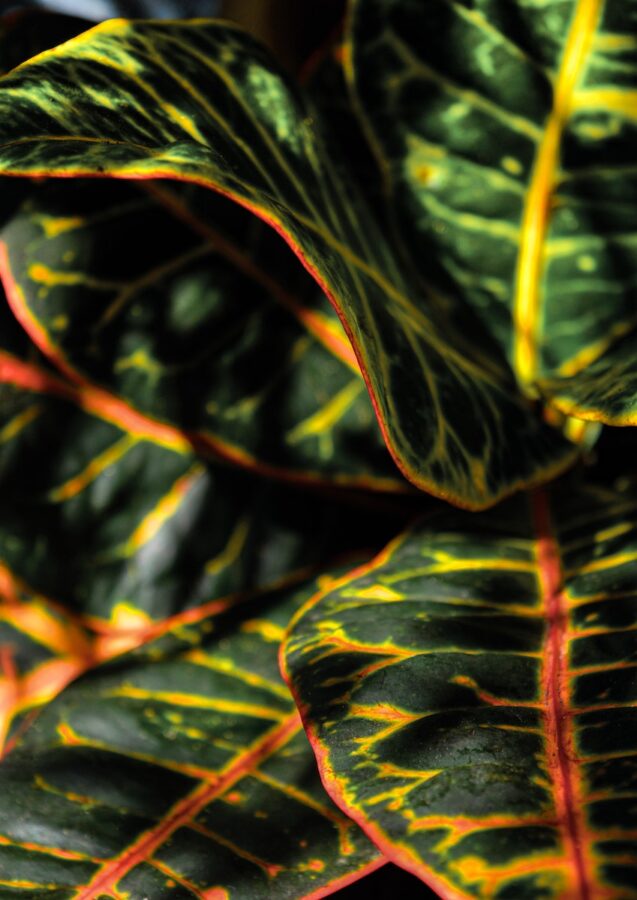
Indirect Sunlight
Croton plants are unified in the sense that they hate direct sunlight. But there the surety ends. When it comes to which type of lighting they prefer, these plants have individual tastes! Some plants thrive in bright, direct sunlight while other crotons want dappled sunlight. It might take a while to discover which conditions are best for your plant. When your plant is happy, the leaves will develop bright colors. Otherwise, they will stay green.
Temperature and Moisture
Croton plants are also not fond of drafty areas. They flourish in rooms where the temperature is kept at roughly 60 degrees Fahrenheit (15 C) and above. The ideal humidity levels should also be kept between 40 and 80 percent. When humidity levels drop below 40 percent, croton plants tend to drop their leaves.
Watering and Feeding
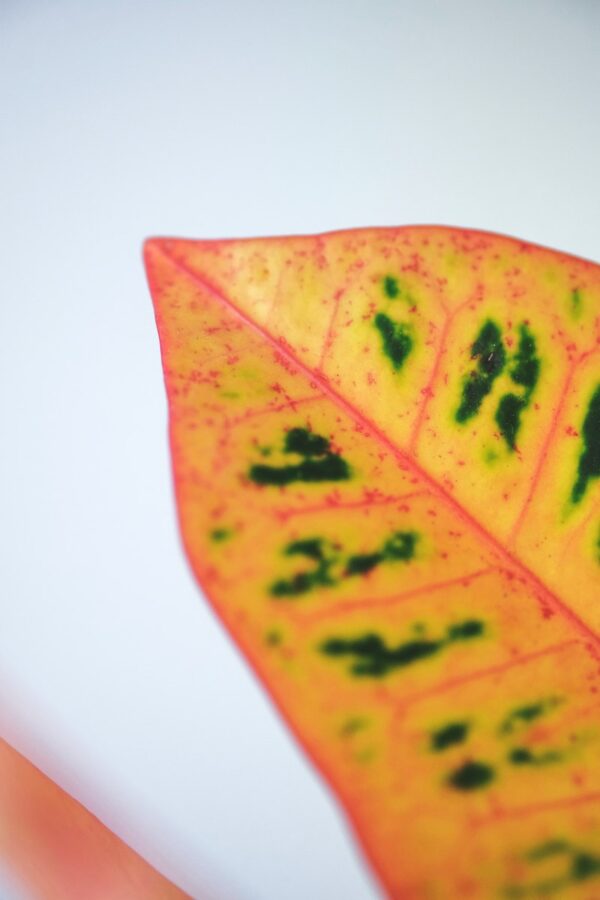
Watering Tips
Croton plants need a more intricate watering routine than most other house plants. But don’t worry, once you have this part under the knee, it is quite manageable. Let’s look at the best tips to correctly water your croton cutie!
- Generally, your plant needs about an inch (2.5 cm) of water every week.
- During the summer, keep the soil moist but not waterlogged.
- You can water every second week in winter.
- Give more water if you notice any wilting leaves.
- Allow the top couple of inches of soil to dry out before you give water.
- Mist the plant frequently during the spring and summer.
Feeding Tips
You can use slow-release pellets or a liquid fertilizer with croton plants. Both will make your croton plants flourish. But whichever method you choose, there are a few guidelines to keep in mind when feeding your plant.
- Only apply the pellets once a month during spring, summer and early fall.
- Give the liquid fertilizer monthly as well.
- The best NPK ratios are 8-2-10 and 3-1-2.
- Do not fertilize at all during the winter.
Soil and Repotting
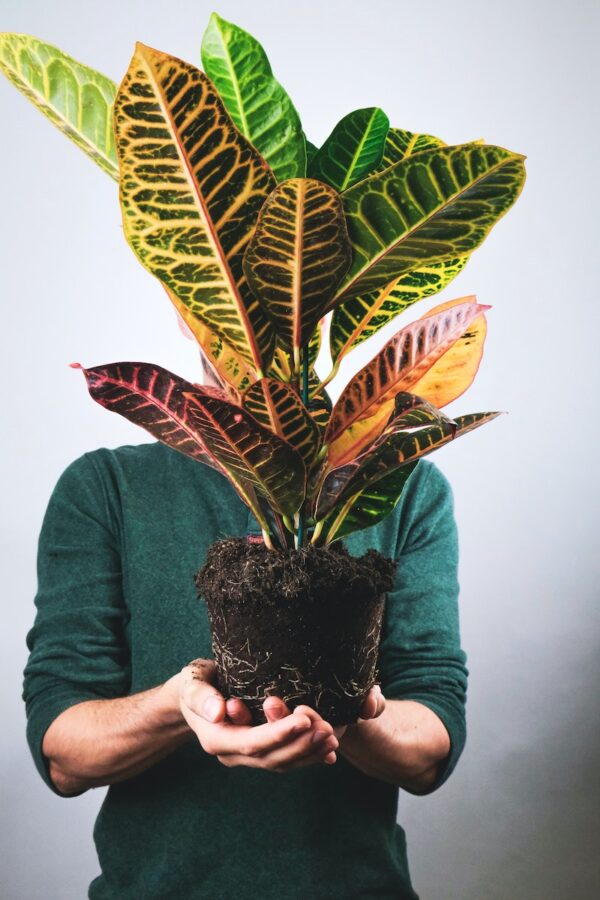
Croton plants need certain soil conditions to stay healthy. They adore soil with a slightly acidic pH level. The earth must also be evenly moist and well-draining. Another ideal condition is soil enriched with compost.
You will do most of the repotting while your croton is still a very young plant. When you buy a youngster, it will grow quite rapidly and it requires a new container every year for about three years.
The best time to repot your croton is during the early spring. After your plant is relatively “grown up” you only need to repot it whenever you notice the appearance of roots. Are there roots peeking from the drainage holes or pushing through the upper layer of the soil? Time to repot!
Get all the best tips on how to re-pot your house plants.
Pruning
When to Prune a Croton Plant
Croton plants tend to respond beautifully when you give them an occasional haircut. This pairs well with their tendency to sometimes grow leggy shoots! So, if your croton has too many scraggly parts, wait until the start of the growing season and then prune it back hard.
Always keep in mind that too much pruning – or incorrect pruning – can give your croton a bad setback. Never prune more than a third of the stem during a single season and always trim above a node. The latter will allow new growth to sprout. Also, only use sterilized scissors to remove unwanted parts. This will avoid unwanted infections or the transmission of diseases between plants.
Pests and Diseases
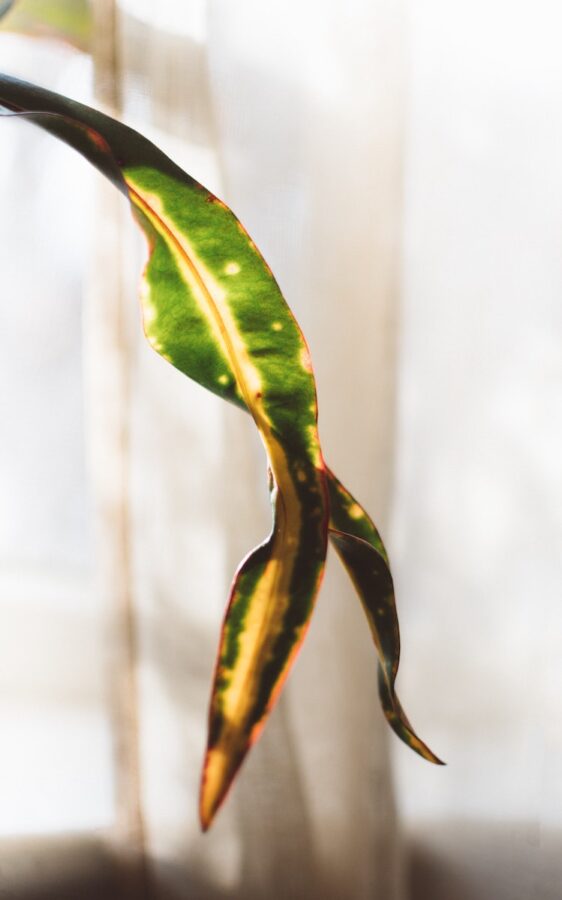
Most of the time, your croton plant is a hardy and healthy character. But like all other houseplants, there will be times that you notice a yellowing, dry leaf or a bug and wonder if you are facing a problem. Let’s look at the most common issues that you can expect to face as a croton parent.
Common Pests
Whenever you notice one of the following infestations, treat your plants with an organic product. A high-quality pesticide or horticultural soap will do the trick.
Mealybugs
The name of this insect describes them very well. They are bugs that look white, dusty and just plain mealy. They often appear together in clusters and hide under leaves or sit out in the open on the stem.
Spider Mites
Are there web-like strings on your plant, like a spider might create? Are the leaves turning yellow or dry? Then your croton might have a severe spider mite infestation. These insects are harder to spot but the damage they wreak is very visible.
Scale Insects
These insects are sucking pests. They can literally drain the life from your plant if the infestation is allowed to grow. Scale insects resemble groups of raised bumps or “scales” clinging to the stem or the underside of leaves.
Diseases and Problems
Like most other houseplants, a croton plant’s main enemies are fungal and bacterial infections, often caused by overwatering or a lack of proper air circulation. Indeed, most croton diseases can be prevented through proper care.
Crown Gall
This highly-infectious disease produces thick growths on leaf veins and along the croton’s stem. Unfortunately, by the time these callouses appear, you have to get rid of the plant. Discard or sterilize the pot as well.
Anthracnose
This fungal infection is also known as leaf spot or blight. Either way, it is not as destructive as crown gall. When you notice the tell-tale discolored blotches on leaves (yellow, brown, tan in color), simply remove the diseased parts and spay your croton with a high-quality and organic fungicide.
FAQ
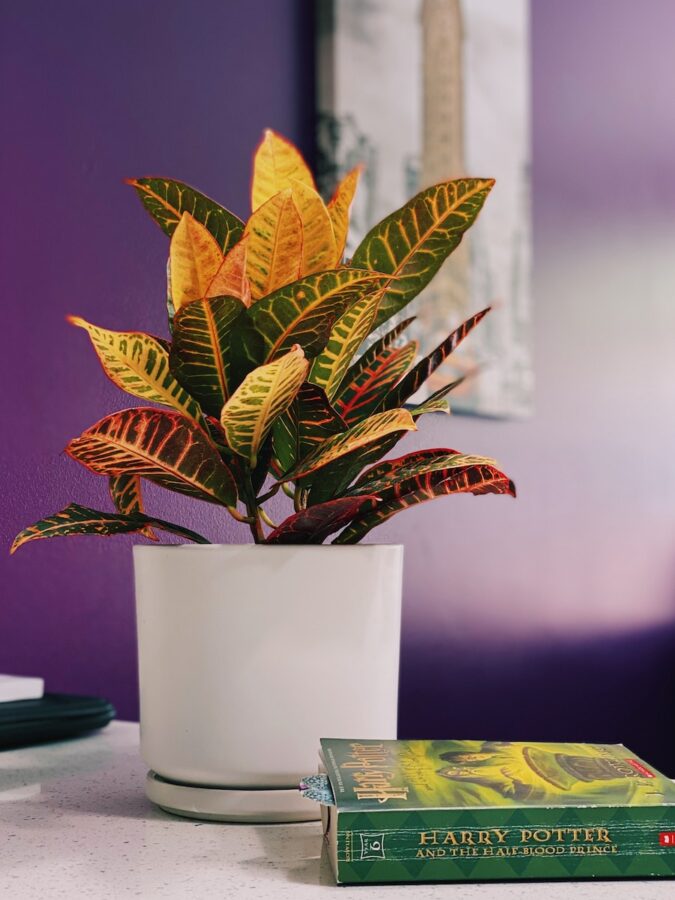
Q: Is My Croton Plant Safe Around Pets And Children?
A croton plant is not entirely safe for pets. While not highly toxic, ingestion can cause medical problems. Some symptoms include diarrhoea, intestinal irritation, drooling and vomiting. Needless to say, these are unpleasant things for a pet to experience so keep your croton well out of reach.
Q: Can I Propagate My Croton Plant At Home?
Yes, you can definitely propagate your croton plant at home. The plant can be propagated at any time of the year as long as conditions remain warm. This plant readily grows from cuttings but sometimes they can also produce offshoots or pups which can then be removed and cultivated.
Q: Can Crotons Stay Outside During Winter?
No, croton plants need to overwinter in a safe location – something that is not possible outdoors, especially in very cold areas or during times of snow. If your crotons are kept in pots, move them inside during the colder months and they should be fine. You can move them outdoors again once the spring arrives and the weather turns warm.
Q: How Many Varieties of Croton Plants Are There?
There is only one species of croton plant but hundreds of varieties. They differ in leaf shape, colors, and height. For example, some only grow 20 inches tall while other varieties can grow to the height of a tall man.
Q: How Do I Make My Croton Plant Appear More Bushy?
Pruning is the best and fastest way to give your croton plant a rounded appearance. Use clean, sterilized scissors to remove all leaves and branches that you need until the plant has a ball shape. Prune your plant in the spring.
Q: Why Is My Croton Plant Losing Its Leaves?
There are several reasons why croton plants drop their leaves. But all causes are rooted in negative conditions. Once you fix them, your plant should stop dropping leaves. These conditions include low humidity, a drafty area, a room that is too cold, underwatering, or when the plant is kept in a place without sufficient light.

